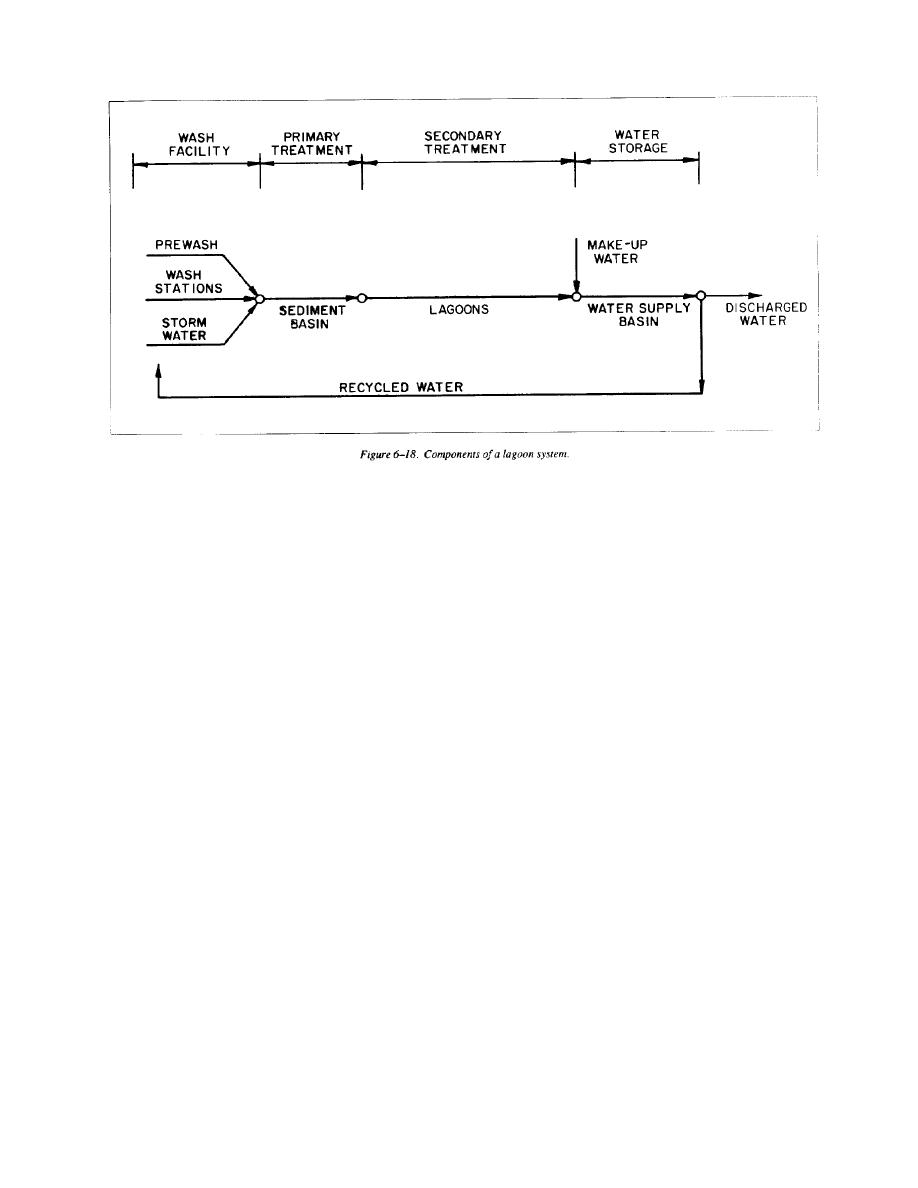
TM 5-814-9
6-28. Discharge system
anticipated flow by the sediment load in the flow by
the design life. Figure 6-19 shows the basic lagoon
A total discharge treatment system removes dirt and debris from
arrangement.
the wastewater before discharging the entire volume to a
secondary treatment system, usually a sewage treatment plant.
b.
Components.
Figure 6-20 shows the unit process in a discharge system, and
figure 6-21 is a schematic depicting the treatment sequence.
Influent structure. The influent structure is
(1)
Primary treatment is required to remove free oils and prevent
located and designed so that it is not sub-
sediment deposition in the conveyances and causing a blockage.
merged.
This treatment also prevents large volumes of sediment and oil
Effluent structure. The effluent structure is
(2)
slugs from entering a sewage treatment plant which is usually
designed to prevent the overflow residual
not designed to handle this type of waste. If it is not feasible or
floating oils and solids.
practical to discharge the wastewater to a sanitary sewer system,
the water may have to be discharged to stormwater surface
Liner. Liner performance should be resistant
(3)
drainage channels or storm sewers. If one of these methods is
to the action of petroleum products.
used, the water must be treated to produce an effluent quality
complying with the installation's National Pollutant Discharge
Oil removal. Continuous oil removal in the
(4)
Elimination System (NPDES) permit since this type of
lagoon is not required.
discharge is classed as a point source. The discharges must be
Stormwater. Stormwater capacity is designed
(5)
regularly monitored and reported.
into the lagoon based on rainfall for the site. It
should be assumed that washing operations at
a.
Equalization basin. An equalization basin may be
the CVWF can occur during a design storm
required if the sewer lines or plant cannot accept the
event.
total instantaneous volume of pretreated wastewa-
ter. If the water volume is to be introduced slowly to
Waste discharge (recycle only). The lagoon
(6)
the discharge location, an equalization basin should
should have the capability of discharging 50
be constructed to hold wastewater until it is
percent of its capacity to control dissolved
discharged. The basin should be designed as previ-
solids that will have accumulated in the wash
ously described.
water. This amount can be reduced to 30
percent in areas where the rainfall meets or
b.
Water supply basin. A water supply basin may be
exceeds the evaporation rate. The lagoon
required in a non-recycle system if the wash de-
should be monitored for dissolved solids each
mand exceeds the available source of supply. This
month of operation.
should be planned, designed and constructed as
Maintenance. The lagoon should be moni-
(7)
previously described.
tored for deterioration of water quality and for
leakage.
6-23


 Previous Page
Previous Page
